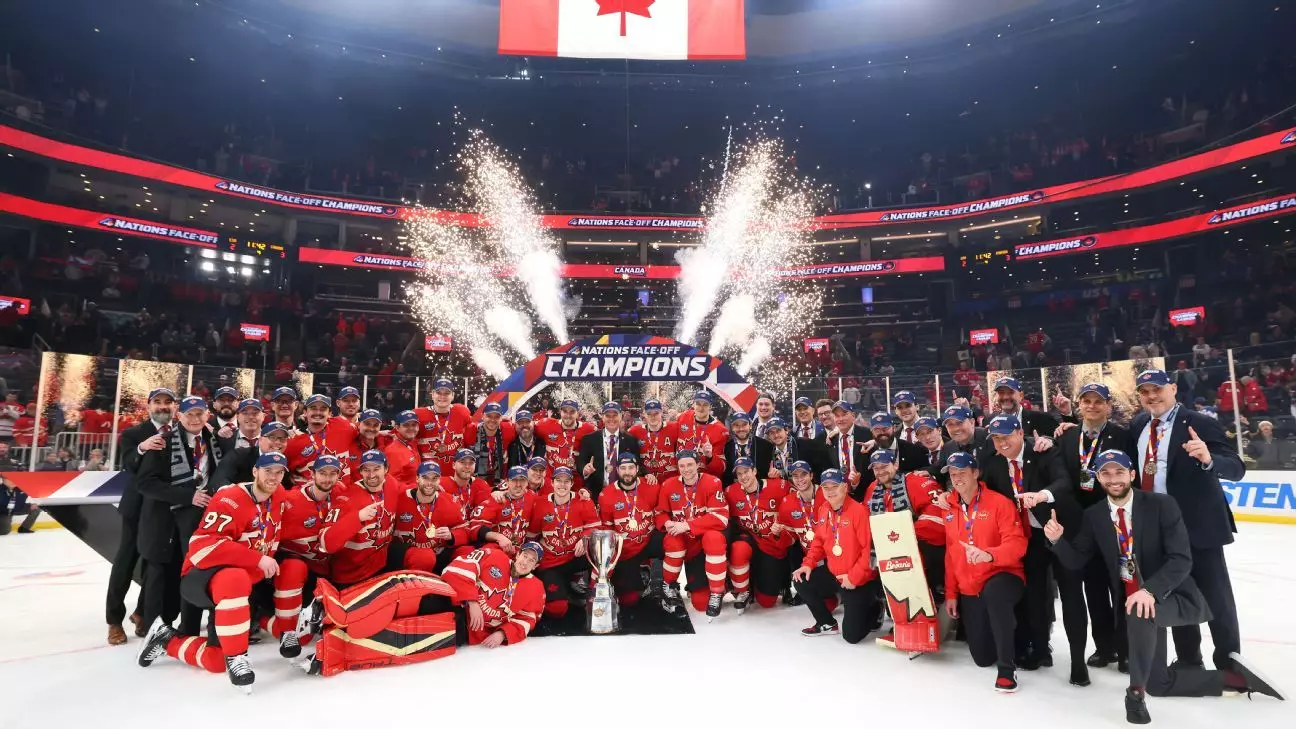In recent months, the National Hockey League (NHL) has been at the forefront of innovations, particularly concerning its All-Star Showcase format. The scintillating success of the inaugural 4 Nations Face-Off has raised the bar significantly, prompting the league to reevaluate what an All-Star event can and should be. As NHL Commissioner Gary Bettman articulated during the league’s annual general manager meetings, they are striving to maintain high standards and competitive freshness in their showcases. With a new event set for February 2026, hosted by the New York Islanders at UBS Arena, the league is on the brink of structuring a groundbreaking competition that could redefine how fans engage with All-Star activities.
Bettman’s insistence on excellence is emblematic of a broader trend in professional sports where traditional formats, long entrenched in the culture, are being reassessed. The stellar reception of the 4 Nations Face-Off, a competition that showcased international talents from the United States, Canada, Sweden, and Finland, underscores a communal desire to prioritize skill and diversity. Connor McDavid’s dramatic overtime goal, securing victory for Canada, sparked enthusiasm and showcased the viability of best-on-best scenarios, indicating that fans crave a deeper, more meaningful experience.
International Competition: A Necessary Revival
The NHL’s return to international play, especially after opting out of recent Olympic Games, is a significant leap towards rekindling the spirit of global hockey competition. After years of navigating through the complexities of the COVID-19 pandemic, which adversely affected league schedules and international participation, the NHL appears committed to integrating its top players into global tournaments once more. By aligning with the International Ice Hockey Federation (IIHF) for potential appearances in the 2026 Milano-Cortina Olympic Games, the NHL is setting the stage for an exciting convergence of talents on an international platform, strengthening not only the game but the global fanbase.
While Bettman refrains from laying out definitive conclusions about the future of All-Star games, the hints at evolution are compelling. The league must be bold in its commitments, given that the monumental shift from a conventional All-Star Game to a competitive sequence like the 4 Nations Face-Off has shown powerful potential. Maintaining intrigue will be pivotal as Bettman and his team work meticulously to curate an event that enhances the league’s reputation and relevance within the sports spectrum.
All-Star Events: Rethinking Engagement with Fans
One of the primary concerns as the NHL contemplates its future All-Star format is fan engagement. Traditionally, these showcases have been criticized for lacking intensity and genuine competitiveness. With alternative formats being explored, the league must prioritize creating events that not only entertain but also resonate with the sport’s core values. Bettman acknowledged that “everything is on the table,” which opens a wealth of possibilities, from competitive tournaments to interactive fan experiences that could redefine what an All-Star event entails.
Moreover, the focus on maintaining exciting races for the playoffs throughout the season underlies a desire for consistency in the league’s offerings. Leveraging innovative event formats can foster a more dynamic relationship between players and fans, leading to heightened investment in the sport. The excitement of live competition should not be overlooked, and with the right approach, the All-Star event can become a highly anticipated milestone on the hockey calendar rather than an afterthought.
Negotiations Ahead: Addressing Future Challenges
As exciting as the proposed changes might be, the NHL’s leadership must balance innovation with the realities of operational logistics, particularly concerning collective bargaining agreements. With the current CBA expiring in September 2026, players’ representatives are set to engage in discussions that might influence the landscape of player contracts and eligibility rules. Any adjustments in junior hockey and college eligibility—especially concerning players from the Canadian Hockey League—reflect a critical aspect of nurturing the sport’s grassroots by enabling young talent to develop while maintaining options for higher education.
Bettman’s optimism about reaching a mutual understanding suggests that there are no looming crises, yet he clearly understands the need to address structural issues effectively. The dialogue surrounding player conditions and operational logistics will be vital in forming a cohesive future where both players and teams feel empowered and understood within the NHL framework.
Looking Forward: Embracing Decentralization
The NHL’s move towards a decentralized draft format signals a willingness to adapt to modern dynamics in sports. By allowing teams to engage remotely while still being represented at crucial events like the entry draft, the league is poised to explore uncharted waters. Bettman’s cautious optimism about receiving feedback from teams about this new approach indicates a strategic mindset; if the decentralized format proves effective and meets the teams’ needs, the league can further innovate its processes.
As the NHL navigates this transformative chapter, the focus must remain on fan experiences, player engagement, and operational efficiency. With so much on the horizon, the league’s readiness to embrace change, combined with a commitment to high standards, could foster a fresh perspective that redefines the enjoyment of hockey for fans, players, and communities alike.


Leave a Reply